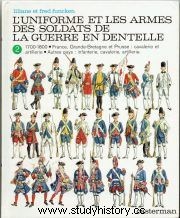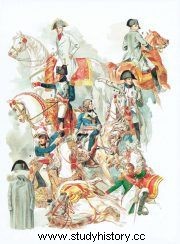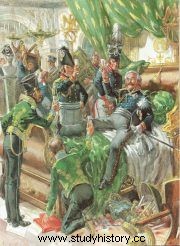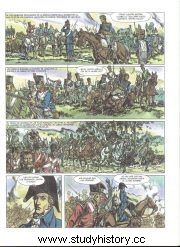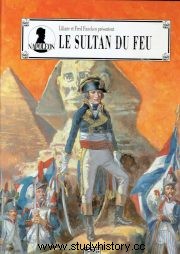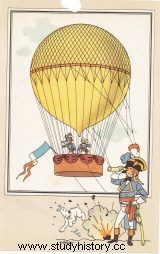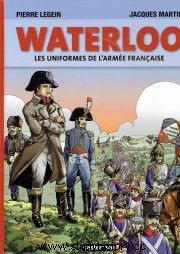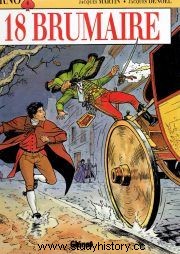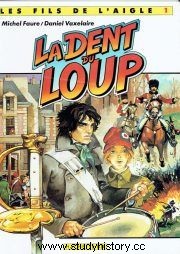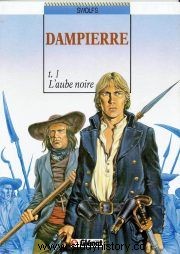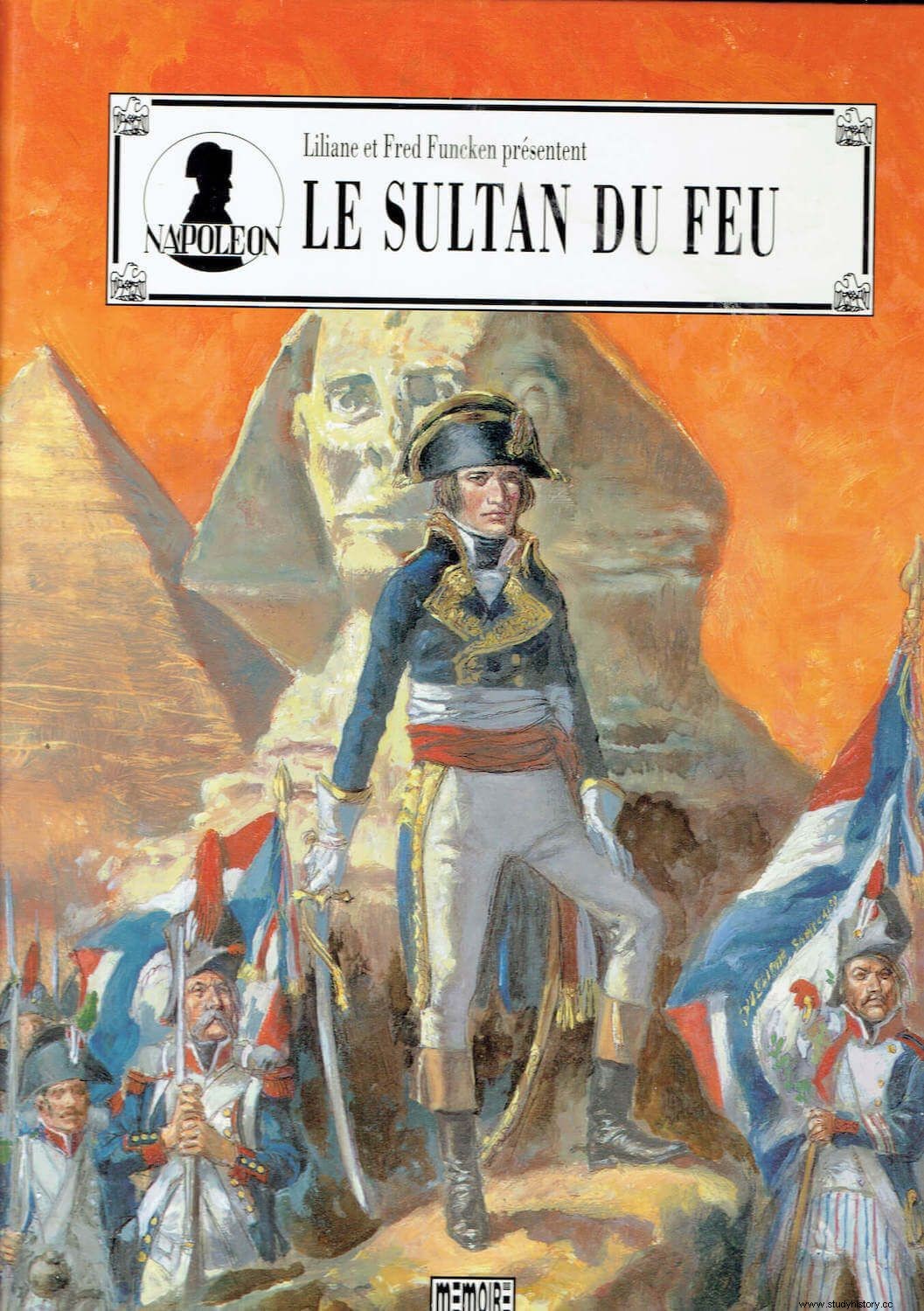
But the illustration has also been used from the second half of the 20th century –and it is widely recognized today– in the field of quality teaching, museography and historical dissemination, being the series of magazines Desperta Ferro an outstanding example in this sense on which it is not necessary to deepen. For this reason, it is interesting to analyse, albeit briefly, the way in which during the last sixty years scriptwriters and illustrators have approached different historical periods, in this case, the period between the French Revolution and the fall of the Empire. (1789-1815). Undoubtedly, said analysis in the field of the bande dessinée Franco-Belgian cannot be understood without analyzing the work done by Liliane (1927-2015) and Fred Funcken (1921-2013) , who between 1965 and 1982, published their most important work, L’encyclopédie des uniformes et des armes de tous les temps , which, as its title indicates, carried out in seventeen volumes an exhaustive uniformological analysis from Ancient Egypt to the Second World War, considering that the two volumes dedicated to the Napoleonic era, and the two dedicated to the eighteenth century (figure 1) constitute the starting point of the studies that led, for example, to the Osprey series. In 1988 they would complete the series with one last title:Les soldats de la Révolution . The Funckens also collaborated in organizing the collections of the Royal Museum of Brussels and carried out specific studies for the magazine Uniforms , in which they published, for example, works on the iconography of Napoleon on horseback, or Blücher during the 1815 campaign (Figs. 2 and 3).
- Figure 1
- Figure 2
- Figure 3
But Liliane and Fred Funcken also worked, as screenwriters and illustrators, for the Belgian magazine Tintin –founded in 1946 by Raymond Leblanc (1915-2008) and Georges Remi, Hergé (1907-1983)–, for which they created various series of historical settings such as Lieutenat Burton (1962-1967) dedicated to the adventures of an American cavalry officer (his analysis as a precedent of the character of Lieutenant Blueberry created in 1963 for the magazine Pilote by cartoonist Jean Giraud, Gir (1938-2012) and screenwriter Jean-Michel Charlier (1924-1989) is inevitable as well as interesting, imposing the romantic loser hero over the more canonical character of the Funckens), and Harald the Viking (1956-1967), a reference in the setting of the Middle Ages that has had many followers and that, in its origin, was in turn influenced by the success of some American strips. In addition, they illustrated the educational project L’Histoire du Monde by the historian trained at the University of Leuven Jean Schoonjans (1897-1976), published between 1955 and 1962, considered a benchmark – of Christian inspiration – in the production of teaching materials in Belgium. Among his works for Tintin Eighteen short stories are told set in the Napoleonic era published between 1953 and 1966, a large part with a script by one of his main collaborators, Yves Duval (1934-2009), in which, as a general rule, very simple sketches were drawn, based on well-known anecdotes, of characters such as Wellington, Bernadotte, Murat, Ney, Cathérine Hübscher Madame Sans-Gêne , or the tailor Leroy, in addition to historical episodes such as the battle of Waterloo or the exile in Santa Elena, in a reduced format of between two and four pages, published in bichrome or tetrachrome, far removed from the precision and detail that characterizes the most of his work.
In 1992 Liliane and Fred will create the first of their two masterpieces :La chute de l’aigle. The Battle of Waterloo (Fig. 4) a very elaborate work in which they poured the knowledge acquired in all their years of research and which is a very vivid chronicle of the day of June 18, 1815, evidently from the French perspective with its inevitable doses of heroization , explained from the narrative introduction of two characters, a doctor and his young assistant, who are immersed in the battle. Two years later, in 1994, also in the series Mémoire d’Europe , by Éditions de la Porte, released a second album, Le sultan du Feu (Fig.5) dedicated to the French expedition to Egypt (1798-1801), on this occasion the narrative excuse being the experience of a young draftsman, Benjamin de Villefranche, forcibly enrolled in Toulon in the group of savants that they accompanied Bonaparte's expedition after being accused of being a spy for drawing the troops, and that he would end up joining the squadron of dromedaries organized by General Kléber. Unfortunately, the Funckens did not continue the series,[1] but some interesting elements are included in their arguments, such as the choice as narrators of cultured characters sometimes from the nobility, a trait that will be repeated in other series as if they wanted to focus in the surviving members of the families broken by the Revolution who embraced the politics developed during the Consulate and the Empire, one of its essential components, obviously always linked to the ascendancy of the figure of Napoleon. A second feature of his work is the blank character. of the narration, ignoring the presence of women in its plots despite the development of the feminist movements and the protest movements that characterized the main stage of its production.
- Figure 4
- Figure 5
The relation of the magazine Tintin with the Napoleonic epic, it has an interesting derivative. In the early 1950s, the character's creator, Hergé , wanted to buy a country house in Wallonia, south of Brussels, being offered the Le Caillou farm, headquarters of Napoleon's last headquarters on June 17, 1815. He declined the offer, but the anecdote became known among the screenwriters and Belgian cartoonists, and Hergé himself did not hesitate to represent his character as a general of the revolutionary period at the Battle of Fleurus for his didactic series Voir et savoir. (Fig.6). One of the best known, the French Jacques Martin (1921-2010) , began his collaboration with the magazine Tintín in 1948, creator of two legendary characters in the world of the clear line, the Roman patrician Alix (1948), and the French journalist Lefranc (1952), but very interested in the use of comics as a training tool for knowledge of the ancient world in his series Alix's Travels (1966-2014), from the medieval period in Jhen's Travels (2005-2014) and aviation between 1903 and the end of the First World War in Lefranc's Travels (2004-2007), he became interested in the battle in 2007 by publishing, together with Pierre Legein, Waterloo. The uniforms of the French armée , an interesting work whose drawing voluntarily infantilized to the taste of the time, includes errors, some of them detectable with the naked eye on the cover of the Casterman edition (Fig. 7). Martin will continue the series with two new titles, Le costume sous la révolution et l’empire (2008) with drawings by Jean-Marie Pâques, with a much better result than the previous one due to the precision and detail of the figures, and Bonaparte. The Campagne d'Egypte (2008) with drawings by Jerôme Mondoloni, especially brilliant in the recreation of the Cairo scenes. In 2010, within the barrage of publications developed to commemorate the bicentennial of the Empire, Martín sponsored, under the title Jacques Martin present, a new four-volume series with script by Pascal Davoz and drawings by Jean Torton, Napoléon Bonaparte , edited between 2010 and 2015, which includes the episodes of the rise of the young revolutionary general and the taking of Toulon (1); the expedition to Egypt (2); the Brumaire coup and the first stage of the Empire (3); and its exhaustion and fall (4). As will happen in other series, it is the initial stage of the character, and specifically the oriental dream that meant the Egyptian campaign, the best treated, as if scriptwriters and illustrators were imbued with the spirit of Stendhal, in the same way that those who treat the stage of the Hundred Days will not be able to avoid the weight of the works of Victor Hugo.
- Figure 6
- Figure 7
Jacques Martin, together with André Juillard (1948) and Jacques Denoël (1963) as cartoonists, he is also the creator of the Arno series, a Venetian musician turned secret agent and spy who will participate in the conspiracies to prevent the Campo-Formio treaty (Le pique rouge , 1985), the expedition to Egypt (L’oeil de Kéops , 1985 and Le puits nubien , 1987 ending in the ruins of Stonehenge), the coup and the creation of the consulate (Brumaire 18 , 1994) (fig. 8), and the sale of Louisiana to the United States (L’Ogress e, 1995 and Chesapeake , 1997), but the series, lacking in appeal in later installments, was cancelled. In the eighties, two other series set in the wars of the Revolution and the Empire will also begin. Michel Faure (1947) and Daniel Vaxelaire (1948) created Les fils de l’Aigle in 1985 (fig. 9) in which, based on the character of Poiret de Morvan, a young aristocrat who, orphaned during the Terror, enlists in the army of the Republic and will participate in the main battles from the siege of Toulon ( La dent du Loup ), realistic conspiracies (Les collets noirs ), the expedition to Egypt (Les sables de Denderah and Capucine ), the formation of the Grande Armée (Le camp de Boulogne ), the campaign of 1805 (Ma bohème ), Austerlitz (Sous le soleil d’Austerlitz and Vienne à feu et à coeur ), and the creation of the Kingdom of Holland (Destinées Bataves ) throughout nine albums released between 1985 and 1994, in which the Napoleonic vicissitudes begin as the axis of the narrative to progressively become the framework of the action. The second series, Dampierre created in 1988 by Yves Swolfs (1955), for the magazine Magazine Vecu and edited by Glénat[2] until 2002, recounts the adventures of a groom protected by a master-at-arms and a lady of the nobility during the period of the Vendée War (fig. 10), as the setting for a series of revenges through which the main characters of the royalist armies parade throughout ten volumes (L'aube noire , Le temps des victoires , Les emisaires , The plot of Laval , Le captif , Les enfants de la terreur, Le trésor de la Guyornière, Point de pardon pour les fi d’garces¡ and L’or de la Corporation ). In the script, the reconstruction is interesting not only of the internal dissensions of the counter-revolutionaries, but also the presentation of the cruelty of the indiscriminate repression of the republican troops against the civilian population, with especially cruel episodes such as the drownings in Nantes. The series and the character of Dampierre had a strong impact on French public opinion, to the point of publishing an album, Croquis d’une épopée (2004) that collected the research work carried out by Swolfs, and that the Vandée Museum sponsored an informative album, Chronique des guerres de Vendée (2000) as didactic material in which the character explains the main stages and problems of the war.
- Figure 8
- Figure 9
- Figure 10
After the debut of the series, the writer Reynald Secher and the artist René Le Hozec tried to develop a parallel with a markedly historical dissemination, of which only the first volume was published, Vendée 1789/1801. Anjou/Bretagne/Poitou (1988), and after the cancellation of the original series, the screenwriter Thierry Jogourel and the cartoonist Gérad Clamm tried to revitalize the theme in 2009 with a new series, Vendée, of which only the first album was released:Le sang and the passion.
To be continued…
Notes
[1] The two volumes were published in 2015 by the publisher Ponent Mon in an integral edition with the title Napoleón.
[2] The Dampierre series was published in Spain by Coeditum in 2015, using the formula of three complete albums:The hour of victories; The Cursed Courtship and The Last Vengeance .

